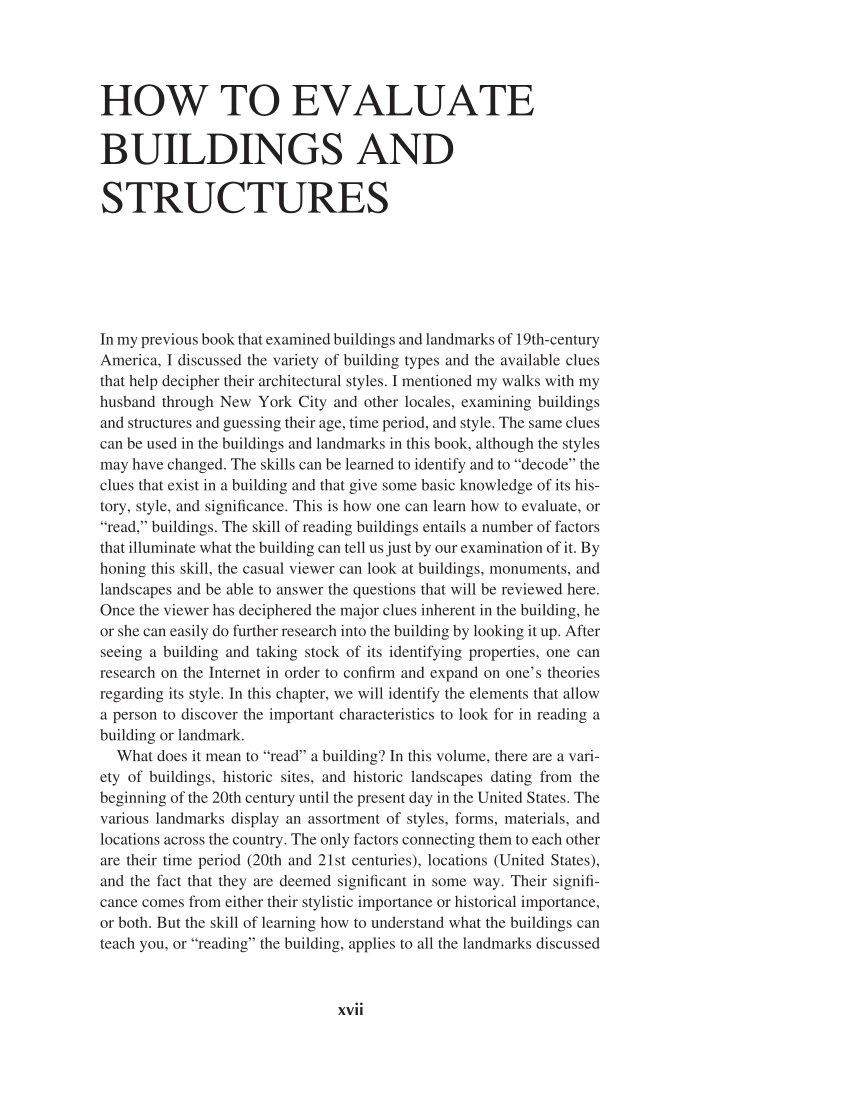xvii In my previous book that examined buildings and landmarks of 19th-century America, I discussed the variety of building types and the available clues that help decipher their architectural styles. I mentioned my walks with my husband through New York City and other locales, examining buildings and structures and guessing their age, time period, and style. The same clues can be used in the buildings and landmarks in this book, although the styles may have changed. The skills can be learned to identify and to “decode” the clues that exist in a building and that give some basic knowledge of its his- tory, style, and significance. This is how one can learn how to evaluate, or “read,” buildings. The skill of reading buildings entails a number of factors that illuminate what the building can tell us just by our examination of it. By honing this skill, the casual viewer can look at buildings, monuments, and landscapes and be able to answer the questions that will be reviewed here. Once the viewer has deciphered the major clues inherent in the building, he or she can easily do further research into the building by looking it up. After seeing a building and taking stock of its identifying properties, one can research on the Internet in order to confirm and expand on one’s theories regarding its style. In this chapter, we will identify the elements that allow a person to discover the important characteristics to look for in reading a building or landmark. What does it mean to “read” a building? In this volume, there are a vari- ety of buildings, historic sites, and historic landscapes dating from the beginning of the 20th century until the present day in the United States. The various landmarks display an assortment of styles, forms, materials, and locations across the country. The only factors connecting them to each other are their time period (20th and 21st centuries), locations (United States), and the fact that they are deemed significant in some way. Their signifi- cance comes from either their stylistic importance or historical importance, or both. But the skill of learning how to understand what the buildings can teach you, or “reading” the building, applies to all the landmarks discussed HOW TO EVALUATE BUILDINGS AND STRUCTURES
Document Details My Account Print multiple pages
Print
You have printed 0 times in the last 24 hours.
Your print count will reset on at .
You may print 0 more time(s) before then.
You may print a maximum of 0 pages at a time.






























































































































































































































































































































































